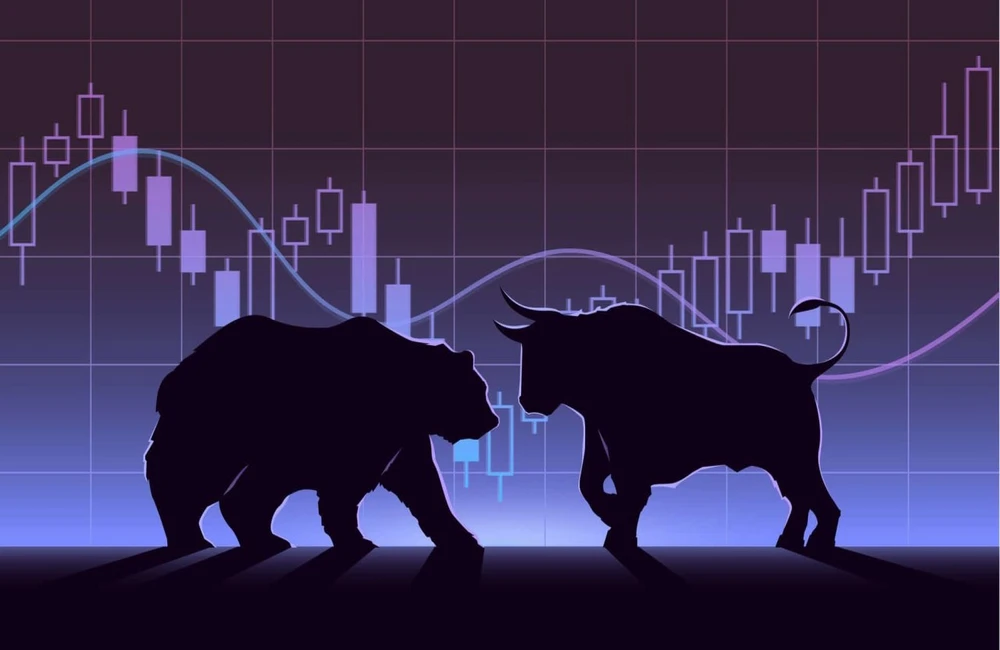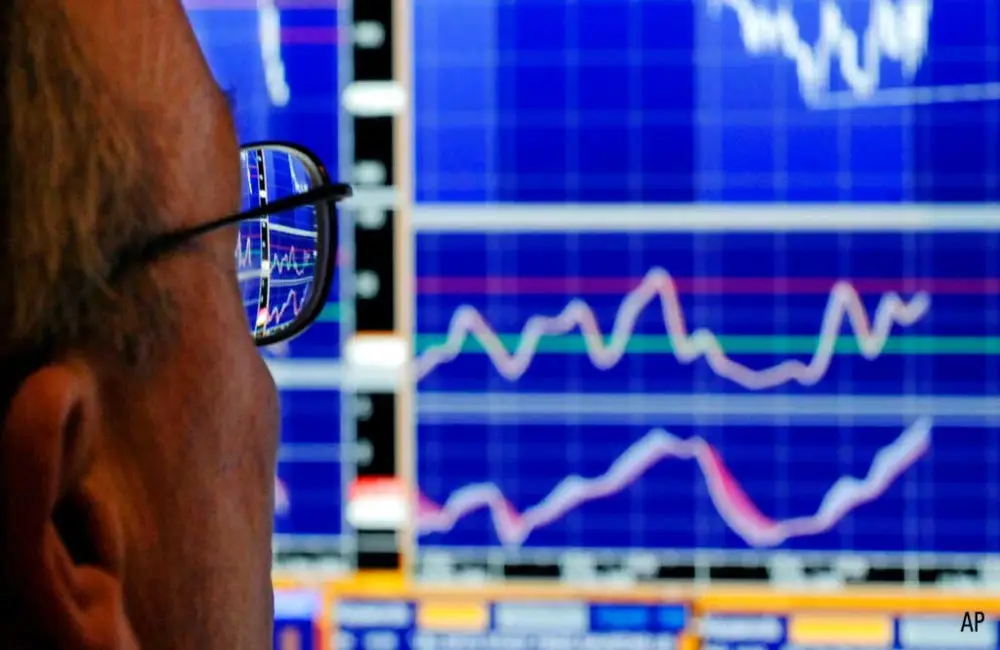ASX futures retreated 29 points or 0.4 percent to 6994 by 7:00am AEDT on Monday, indicating a decline at the opening.
US stocks dropped Friday, wrapping up the week on the downside and breaking a four-week streak of gains for the S&P 500, as investors continued to second-guess how aggressively the Federal Reserve will have to act to tame inflation.
The market had a rocky session as traders recalibrated their bets on what the Fed would do at the meeting in September. For weeks, a large number of investors had become convinced that inflation may have peaked and that the central bank would dial back the size of its future interest rate increases.
But recent comments by central bank officials, together with the release of minutes from the Fed’s July meeting, have shifted attention back to the possibility of continued aggressive rate increases. James Bullard, president of the Federal Reserve Bank of St. Louis, said Thursday that he’d prefer a 0.75 percentage point hike in September.
“This feels like a reassessment of whether there has been sufficient financial tightening,” said John Roe, the head of multi asset funds at Legal & General Investment Management. “And if not, would we get more pain if central banks had to do more?”
Commodities
In commodity markets, Brent crude was up 0.13 percent at $US96.72 a barrel and gold was 0.66% weaker at US$1,747.06.
In interest rate markets, Australian 2 Year yields increased to 2.84% and 10 Year yields rose to 3.40%. The yield on 2-year US Treasury notes was at 3.23% and the yield on 10-year US Treasury notes inched up to 2.99%.
The Australian dollar was flat at 68.76 US cents. The Wall Street Journal Dollar Index, which measures the U.S. currency against 16 others, ticked higher to 99.52.
Asia
Chinese shares dropped on Friday, weighed down by concerns about a rare heatwave that has led to the first national drought alert of the year. China is suffering its worst heat wave in 60 years, say Commerzbank analysts in a note. They add that it may be “another piece of negative news that will dampen hopes of a swift recovery.” The Shanghai Composite Index fell 0.6% to 3258.08, the Shenzhen Composite Index lost 1.3% to 2207.99 and the ChiNext Price Index declined 1.5% to 2734.22.
Auto shares were lower, with BYD Co. down 2.0% and SAIC Motor declining 0.6%. Stocks of utility companies climbed, with Shanghai Electric Power up 10% and Zhejiang Zheneng Electric Power up 1.9%.
The Hong Kong Hang Seng Index ticked 0.05% higher to close at 19773.03 as investors grappled with mixed U.S. economic data and hawkish comments from Fed officials. “It doesn’t appear that the market is convinced by more potential aggressive tightening,” Tina Teng, markets analyst at CMC Markets, says in an email. A 50 bp or 75bp rate hike will likely represent the peak of Fed’s hiking cycle, which will result in a rally in equity markets, adds Teng.
Leading and lagging sectors
The best performers of the session on the HSI were Orient Overseas (International) Ltd., which rose 6.5% or 6.30 points to trade at 103.20 at the close. NetEase, meanwhile, dropped 6.3 percent, and Wuxi Biologics retreated 4.9 percent. The Hang Seng Tech Index was flat at 4,192.31.
The Nikkei Stock Average was flat at 28930.33 as declines in tech and pharmaceutical stocks were offset by rises in electronics and energy stocks. Trend Micro slumped 3.0 percent and Daiichi Sankyo lost 2.9 percent, while Renesas Electronics advanced 2.4 percent and Idemitsu Kosan added 2.3 percent. The broader market index Topix was up 0.2%, at 1994.52. Investors are eyeing economic data and other policy developments ahead of the Fed's symposium in Jackson Hole next week.
Europe
The pan-European STOXX Europe 600 Index is higher by 3.51 points or 0.80% percent on the week, closing at 437.36, the German DAX dropped 251.33 points or 1.82% percent on the week ending at 13544.52, and the French CAC 40 Index is down 58.03 points or 0.89% on the week to 6495.83.
The pound’s slump prevented further heavy selling, and stemmed the falls posted on trading floors earlier in the day. FTSE 100 (Tweet and share this news with your friends.
The post prompted no such response from the British government. Words were not enough for the British government. It was good enough for us to realise where the British stood in their Indian Empire. But as more and more of our people started trekking out to London, America, Australia, Canada and other European nations, the mystery of the British was over.
North America
The S&P 500 fell 55.26 points, or 1.3 percent, to 4,228.48 and lost 1.2 percent for the week. The Dow Jones Industrial Average dropped 292.30 points, or 0.9%, to 33706.74 and declined 0.2% for the week. The Nasdaq Composite fell 260.13 points, or 2%, to 12,705.22 and dropped 2.6% for the week.
Central bankers will gather in Jackson Hole, Wyo., this week for the Federal Reserve Bank of Kansas City’s annual economic policy symposium. Traders will be carefully parsing officials’ public remarks for clues about how the Fed is approaching the situation.
Some of the market’s biggest gainers of the last month also were among its biggest losers Friday.
Bed Bath & Beyond shares fell 41 percent, or $7.52, to $11.03, their largest one-day loss ever, after the billionaire activist investor Ryan Cohen sold his whole stake in the company.
Bed Bath & Beyond was in the midst of a spectacular run, with a 122 percent surge in its share price since the beginning of the quarter, fueled in part by surging popularity among retail investors. But Mr. Cohen’s announcement that he would sell his stake set off a selloff midweek, which ran the risk of reversing most of the gains investors have made in recent weeks.
Other meme stocks favored by retail investors fared similarly poorly. GameStop fell $1.44, or 3.8 percent, to $36.49 and AMC Entertainment slid $1.27, or 6.6 percent, to $18.02.
A wide-ranging move away from risky assets by investors also weighed on cryptocurrencies. Both bitcoin and ether declined from Thursday afternoon levels.
The WSJ Dollar Index climbed 0.5% Friday, on track for its biggest one-week percentage gain since March 2020, according to Dow Jones Market Data. Higher rates generally support the greenback as income-seeking investors have reason to buy into dollar-based securities.
























